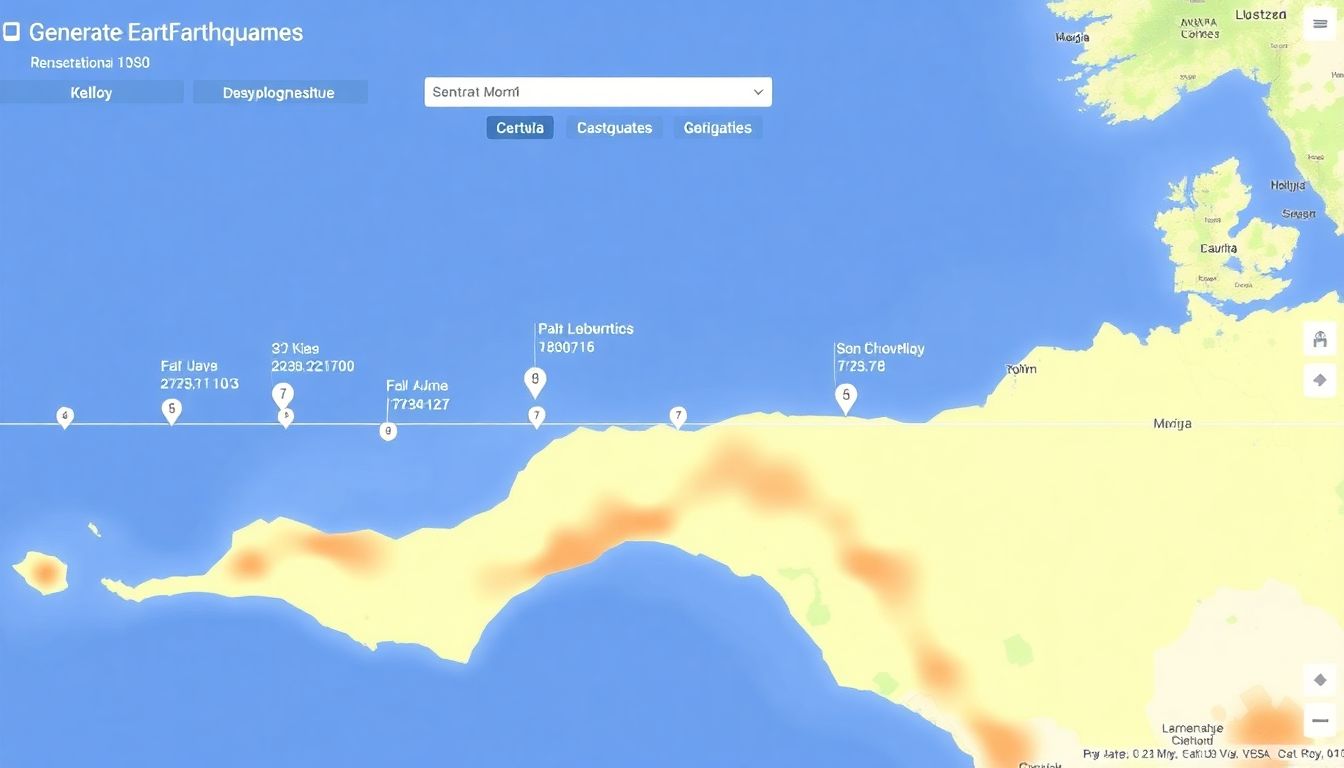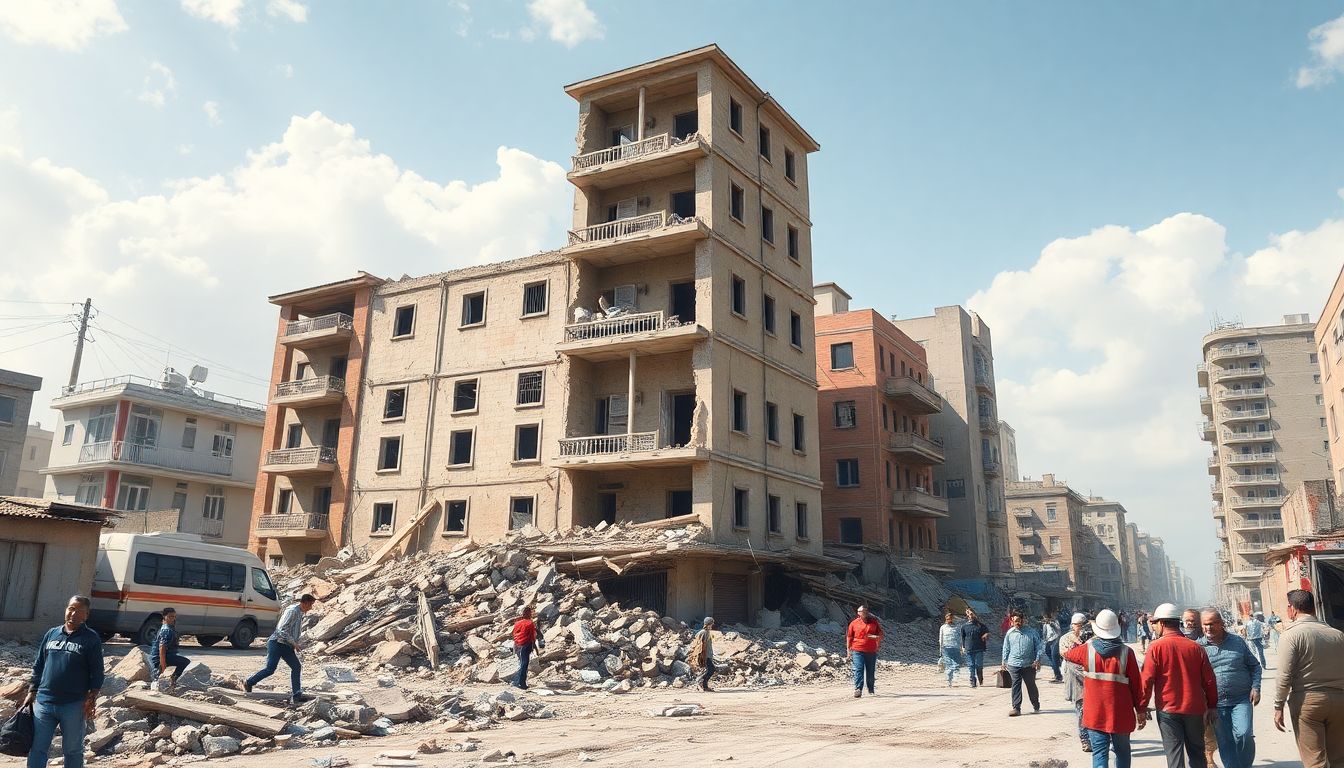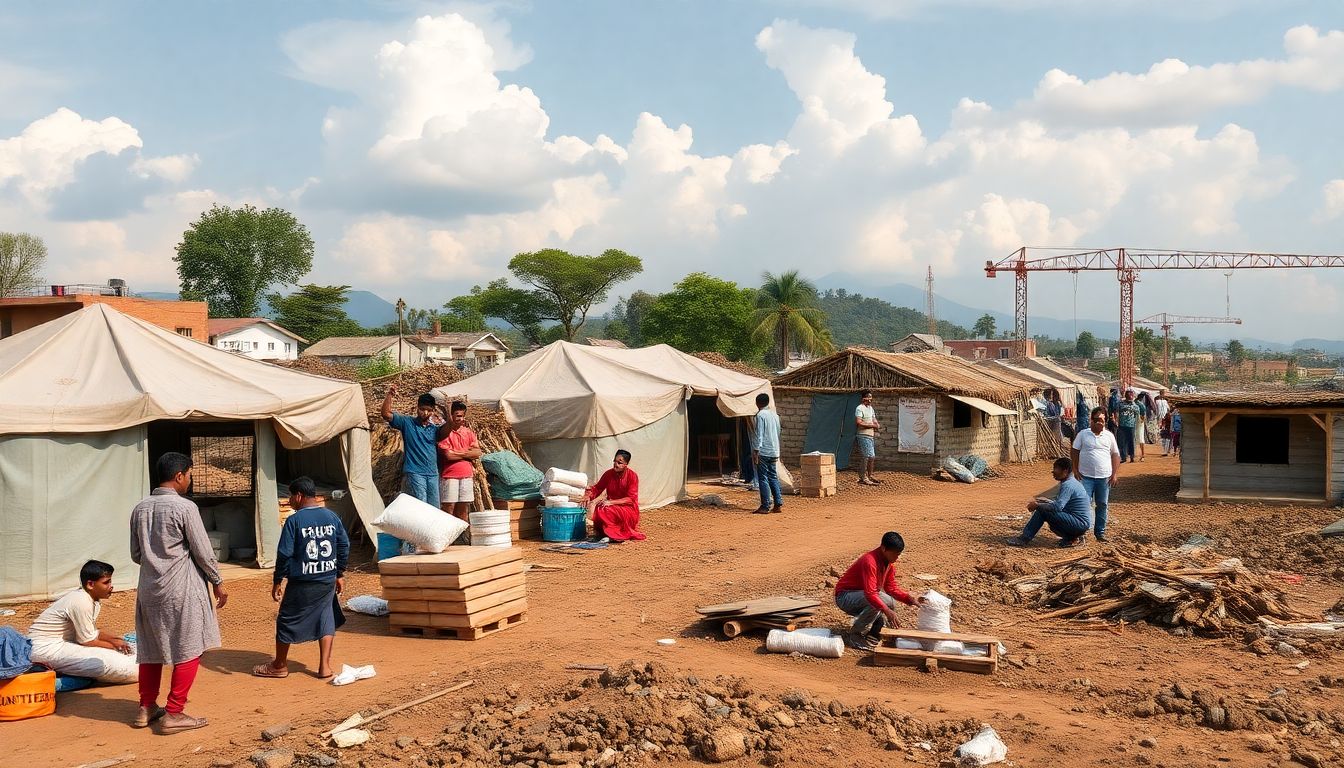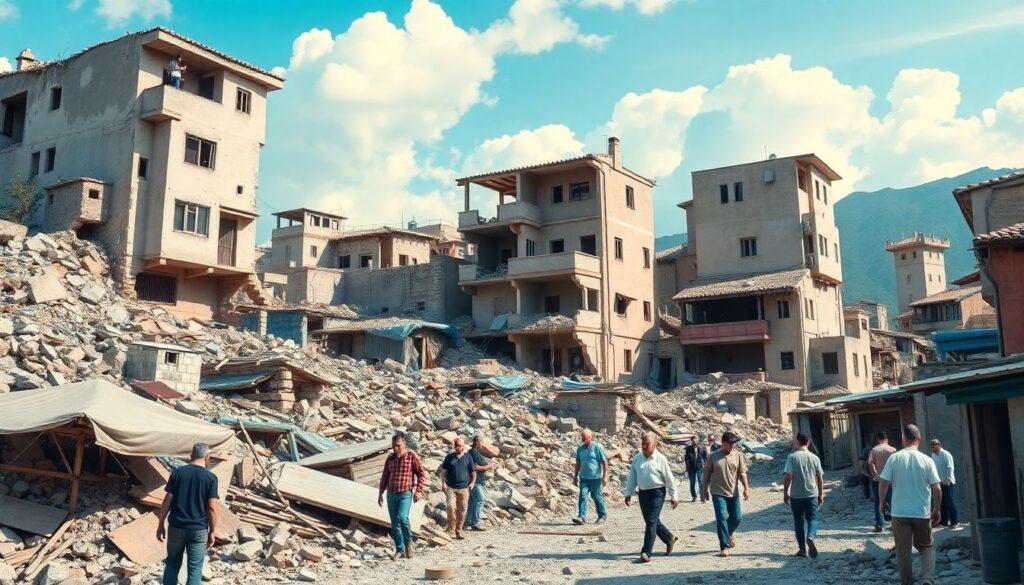Welcome to our in-depth exploration of the 2023 Turkey-Syria Earthquake. This article aims to provide a comprehensive overview of the event, its impact, the response and recovery efforts, and how you can help. Join us as we delve into the details, highlighting the resilience and collective efforts of communities and organizations in the face of adversity.
Understanding the Impact and Supporting Recovery
Imagine a canvas painted in hues of grey and brown, starkly different from the vibrant cityscape that once stood proudly. Buildings, once symbols of human achievement, now lay in heaps, their jagged edges jutting out like broken teeth. The earth, momentarily a roiling sea, has left its mark; crumbled walls, shattered glass, and dust, so much dust. It’s a scene of devastation, a brutal reminder of nature’s raw power.
Yet, amidst this grim tableau, there’s movement. People, like ants on a disturbed hill, emerge from the wreckage. They are not broken but bent, not defeated but determined. They stumble, stand, and start to search, their voices calling out, hands reaching to help.
A woman, her face smeared with dirt, cradles a child not her own, murmuring soothing words. A man, his shirt torn, pulls aside a slab of concrete to free a stranger. A teenager, hands bleeding, digs through the rubble, his eyes filled with a fierce determination. This is not a scene of despair but of hope. It’s a testament to human resilience, a silent scream that echoes, ‘We will rise again.’

Overview
In the early hours of February 6, 2023, a devastating earthquake struck the border region of Turkey and Syria. The initial quake, measuring 7.8 on the Richter scale, hit at approximately 4:17 AM local time, with its epicenter in the Pazarcık district of Turkey’s Kahramanmaraş province. This powerful seismic event was followed by a series of strong aftershocks, including a significant 7.5-magnitude earthquake that occurred around nine hours later.
The timeline of events unfolded rapidly, with the initial earthquake causing immediate and catastrophic damage. Buildings collapsed, and infrastructure was severely compromised. Rescue efforts began swiftly, but the sheer magnitude of the destruction posed significant challenges. The subsequent aftershocks compounded the crisis, causing further damage and hampering rescue operations. The affected regions included major cities and towns in both Turkey and Syria, with reports of destruction and casualties pouring in from areas such as:
- Adana
- Malatya
- Diyarbakir
- Aleppo
- Hama
- Latakia
The initial impact on the affected regions was severe. Thousands of buildings, including residential homes, hospitals, and schools, were reduced to rubble. Critical infrastructure such as roads, bridges, and power lines were heavily damaged, making it difficult for emergency services to reach those in need. The human toll was immense, with tens of thousands of fatalities and many more injured. The World Health Organization reported that it was the most devastating earthquake in over 100 years for the region.
As day broke, the full extent of the devastation became increasingly clear. Survivors were left homeless in the bitter cold, and the urgent need for food, water, and medical supplies became apparent. International aid began to mobilize, with countries around the world pledging support and dispatching search and rescue teams. The disaster highlighted the need for robust emergency preparedness and response mechanisms, as well as the importance of international cooperation in the face of such overwhelming natural disasters.

Impact
In the grim light of day, the sheer magnitude of destruction caused by the 7.8 magnitude earthquake that struck Turkey and Syria on February 6, 2023, became brutally apparent. Lives were abruptly shattered, as the official death toll rapidly climbed to over 50,000 and continues to rise with each passing day. Tens of thousands more were injured, many seriously, and the number of those left homeless has reached well over a million. The images of utter devastation that have emerged—flattened buildings, crumbled infrastructure, and traumatized survivors—have sent shockwaves of grief and sorrow around the world.
The earthquake’s epicenter may have been in southern Turkey, but the impact was catastrophically transnational. In Syria, already grappling with over a decade of civil war, the quake has heaped fresh misery on a population in dire need. Syrian cities like Aleppo, Hama, and Latakia have been hard hit, with reports of significant fatalities and massive structural damage. The existing humanitarian crisis has been enormously exacerbated by this natural disaster, with basic necessities like food, water, and shelter now in even more critically short supply. The United Nations has warned that this catastrophe could overwhelm the already strained aid infrastructure and has appealed for international support.
The scale of infrastructural damage is staggering. In both Turkey and Syria, hospitals, schools, and residential buildings have been reduced to rubble. Historic sites, once symbols of cultural heritage, have also been ravaged. Key infrastructure, such as
- roads
- bridges
- power grids
, has been severely damaged, impeding rescue efforts and the delivery of vital supplies. The World Bank has estimated the initial cost of reconstruction to be over $34 billion in Turkey alone—a figure that is likely to rise as the full extent of the damage becomes clear.
The earthquake has not only shattered physical structures but also torn apart the social fabric of communities. Families have been ripped apart, and countless individuals have been left traumatized, struggling to come to terms with their losses. The psychological impact of this disaster will be long-lasting, requiring sustained support and intervention. As the international community rallies to provide aid and assistance, it is crucial that we keep the plight of the affected populations at the forefront of global attention.

Response & Recovery
In the wake of the disaster, a swift and coordinated response effort was launched to address the immediate needs of the affected communities. Local organizations, such as the Red Cross and Salvation Army, were on the ground within hours, providing emergency shelter, food, and water. International organizations, including the United Nations and Doctors Without Borders, quickly mobilized to support these efforts, sending teams of experts and much-needed supplies. The collaboration between local and international entities ensured that the response was both comprehensive and culturally sensitive, meeting the unique needs of the impacted populations.
However, the recovery efforts faced numerous challenges. Infrastructure damage hindered the distribution of aid, with roads blocked and communication lines down. To overcome these obstacles, organizations implemented innovative strategies. Helicopters and drones were used for aerial assessments and deliveries, while satellite communications were established to facilitate coordination. Local volunteers, with their intimate knowledge of the area, played a crucial role in navigating the terrain and ensuring aid reached even the most remote communities.
To support the affected communities in the long term, several strategies were implemented:
- Psychosocial support programs were established to help individuals cope with the trauma they experienced.
- Cash-for-work initiatives were launched to stimulate local economies and provide residents with a source of income.
- Educational facilities were rebuilt and equipped to ensure that children could continue their schooling.
- Healthcare services were strengthened to prevent outbreaks of disease and address the health needs of the population.
International organizations also played a pivotal role in advocating for the needs of the affected communities on a global scale. Through strategic communications and partnerships, they raised awareness and secured additional funding for the recovery efforts. By amplifying the voices of the affected communities, these organizations ensured that their needs remained a priority for the international community. This collaborative approach, combining local expertise with international resources and influence, proved instrumental in the ongoing recovery and rebuilding process.

How to Help
In the wake of a disaster, the urge to help is immediate and powerful. While donations of goods and services are well-intentioned, it’s important to understand that cash donations are often the most effective form of support. Unlike physical donations, cash allows relief organizations to respond quickly to the specific needs of affected communities, ensuring that the right resources are procured locally. This not only helps to stimulate local economies but also ensures that relief efforts are culturally appropriate and environmentally sensible.
Cash donations enable organizations to act swiftly and efficiently. They can use the funds to purchase exactly what is needed, when it is needed. This could mean providing clean water, medical supplies, or temporary shelter—essentials that can vastly improve the lives of those affected. Moreover, cash donations allow relief organizations to plan and allocate resources strategically, rather than managing and sorting through in-kind donations that may not meet the immediate needs.
It’s crucial to remember that recovery is a marathon, not a sprint. While the initial outpouring of support is vital, long-term commitment is equally important. Here are some ways individuals and organizations can provide sustained support:
- Set up recurring donations to trusted relief organizations.
- Organize fundraising events that continue past the initial response phase.
- Advocate for policies that support long-term recovery and resilience.
For organizations, supporting recovery efforts can also mean investing in the affected region’s future. This could involve partnering with local businesses, offering pro bono services, or providing grants and scholarships. By fostering long-term relationships, organizations can help communities rebuild stronger and more resilient, ready to face future challenges with enhanced capabilities and resources.









